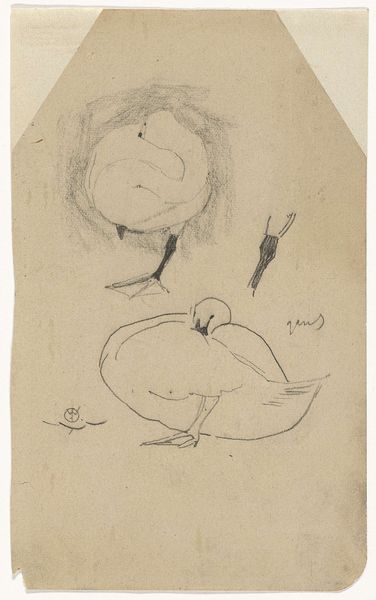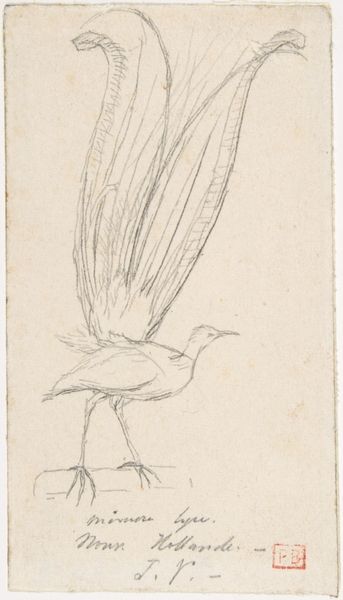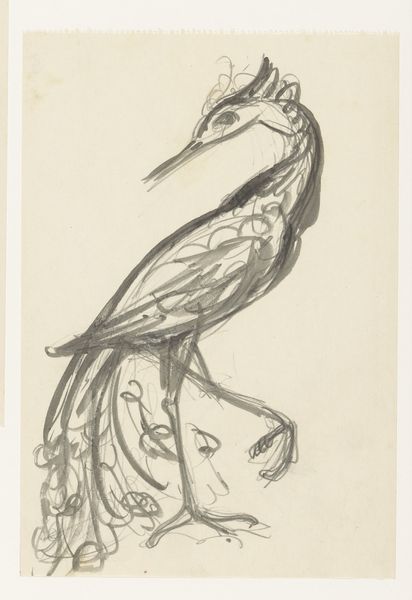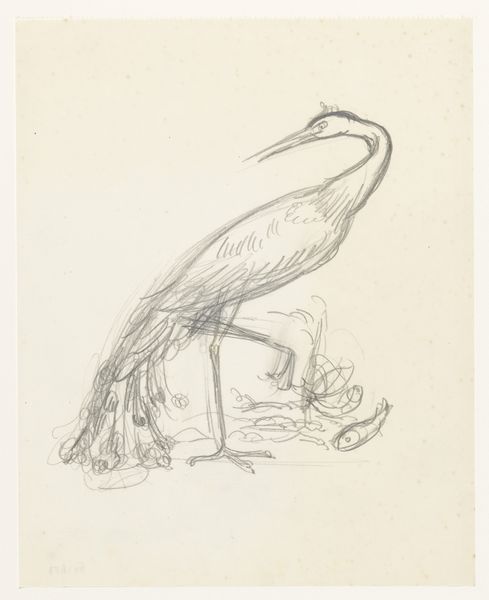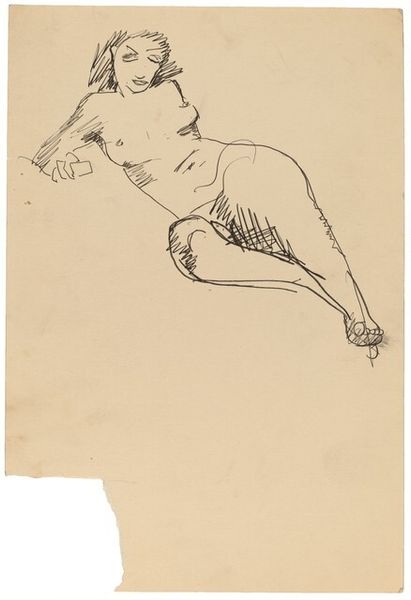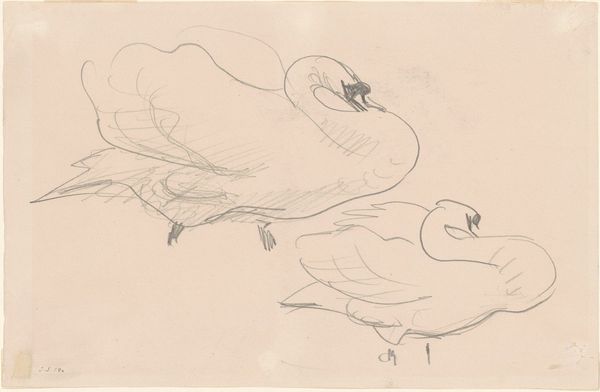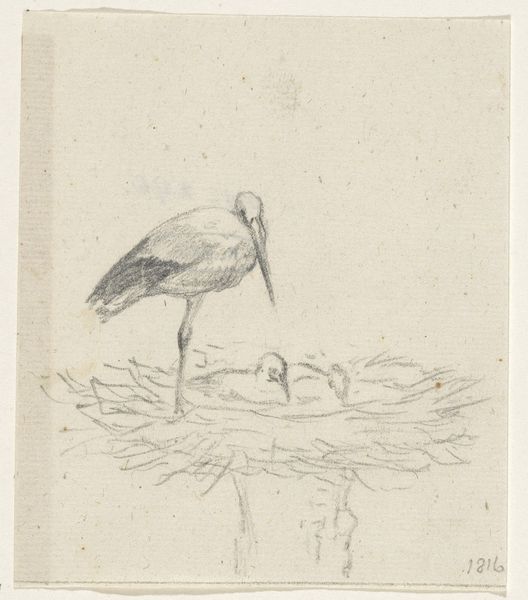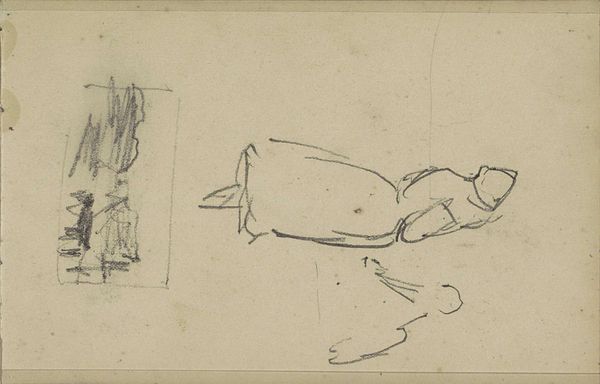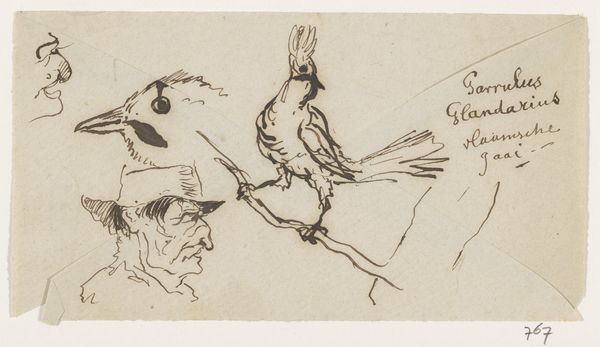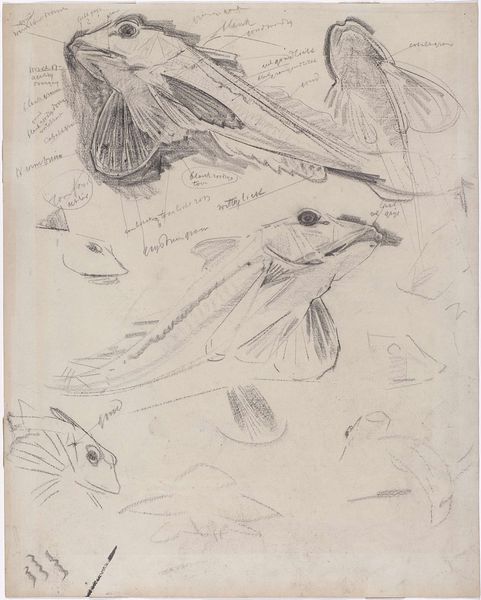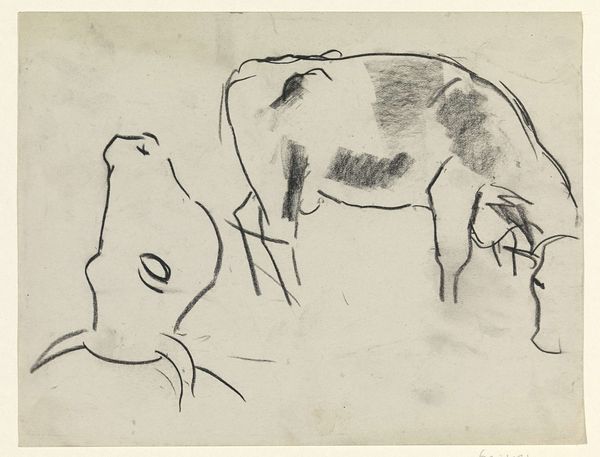
drawing, paper, pencil
#
drawing
#
figuration
#
paper
#
pencil
#
realism
Dimensions: height 153 mm, width 98 mm
Copyright: Rijks Museum: Open Domain
Curator: Gerrit Willem Dijsselhof created this piece titled "Eend en andere watervogel"—or "Duck and Other Waterfowl"— sometime between 1876 and 1924. It's a drawing rendered in pencil on paper. Editor: The image feels…sketchy, and informal, like a study rather than a finished work. It possesses a simplicity that draws me in, yet it seems deliberately incomplete in its level of detail. Curator: Indeed. Note how Dijsselhof employs varied densities of graphite to define form and texture. The hatching in the upper figure, describing the feathers, contrasts sharply with the smoother, more simplified form of the duck below. The work foregrounds the formal construction of observed subjects. Editor: And I immediately register the inherent symbolism of water birds, in their traditional association with fluidity, emotion, the subconscious. Here, especially with the red accent on the breast of the lower duck—a vulnerable, vital spot—I am also made aware of the tenderness that informs realism when faced with a fellow being. Dijsselhof notes color, giving value even to understatement. Curator: That fleck of vermillion operates almost as a compositional pivot, drawing the eye, animating the monochrome scheme with a point of concentrated hue. Formally, it’s a calculated intervention. Note also Dijsselhof’s commitment to outline. The strong lines delineate each figure from the ground, further enhancing the flatness of the composition. Editor: And how appropriate that such emphasis should fall on such a chromatic focal point! Birds, waterfowl in particular, have often signaled a link to otherworldly realms— messengers between the tangible and the unseen. They also carry emotional valence. Consider ducks in folklore, often standing in for resourcefulness, sociability, belonging, and home. That little mark underscores that symbolism for me. Curator: An intriguing point, yes. Although I'd insist such semiotic readings depend first upon the underlying structural articulation—line, value, planar arrangement—the basis through which we decode images meaningfully. Editor: All in all, one finds here how realism becomes, subtly and enduringly, something much more meaningful than just observation. Curator: A fine observation, drawing us to a more complex comprehension.
Comments
No comments
Be the first to comment and join the conversation on the ultimate creative platform.
